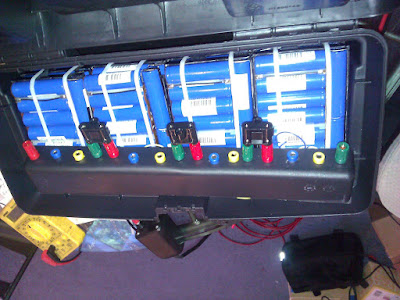IBScootn
100 W
I currently have a 9A charger for my motorcycle. J1772 charging stations are popping up everywhere around me, and I would like to take advantage of the two to three times faster charging rate that these 240V stations can provide. Problem is typical 87.6V cutoff, 20-30A chargers are too bulky, heavy, and/or expensive.
I haven't found a perfect solution, but starting to consider two of the new bmsbattery 900w units @ $145 per shipped:
http://www.bmsbattery.com/alloy-shell/457-alloy-shell-900w-lifepo4li-ionlead-acid-battery-ev-charger.html
These are supposed to deliver 10A for 24s lifepo4. So I'm considering putting two in parallel for 20A. If that works, I might add a third for 30A. On my GBS 40AH cells, the recommended charge rate is .3 to .8C (12A to 32A) with .5C (20A) as the ideal charge rate.
Anyone see a problem with paralleling two to three of these chargers together? Are there better solutions for fast opportunity charging off 240V charging stations? Any precautions I should make in paralleling them? I expect to pot many components/connectors to make it a more reliable mobile charger.
I like the fact that you can order these chargers with a specific HVC as I might add two more cells and bring the pack to 26s.
Thanks,
I haven't found a perfect solution, but starting to consider two of the new bmsbattery 900w units @ $145 per shipped:
http://www.bmsbattery.com/alloy-shell/457-alloy-shell-900w-lifepo4li-ionlead-acid-battery-ev-charger.html
These are supposed to deliver 10A for 24s lifepo4. So I'm considering putting two in parallel for 20A. If that works, I might add a third for 30A. On my GBS 40AH cells, the recommended charge rate is .3 to .8C (12A to 32A) with .5C (20A) as the ideal charge rate.
Anyone see a problem with paralleling two to three of these chargers together? Are there better solutions for fast opportunity charging off 240V charging stations? Any precautions I should make in paralleling them? I expect to pot many components/connectors to make it a more reliable mobile charger.
I like the fact that you can order these chargers with a specific HVC as I might add two more cells and bring the pack to 26s.
Thanks,


